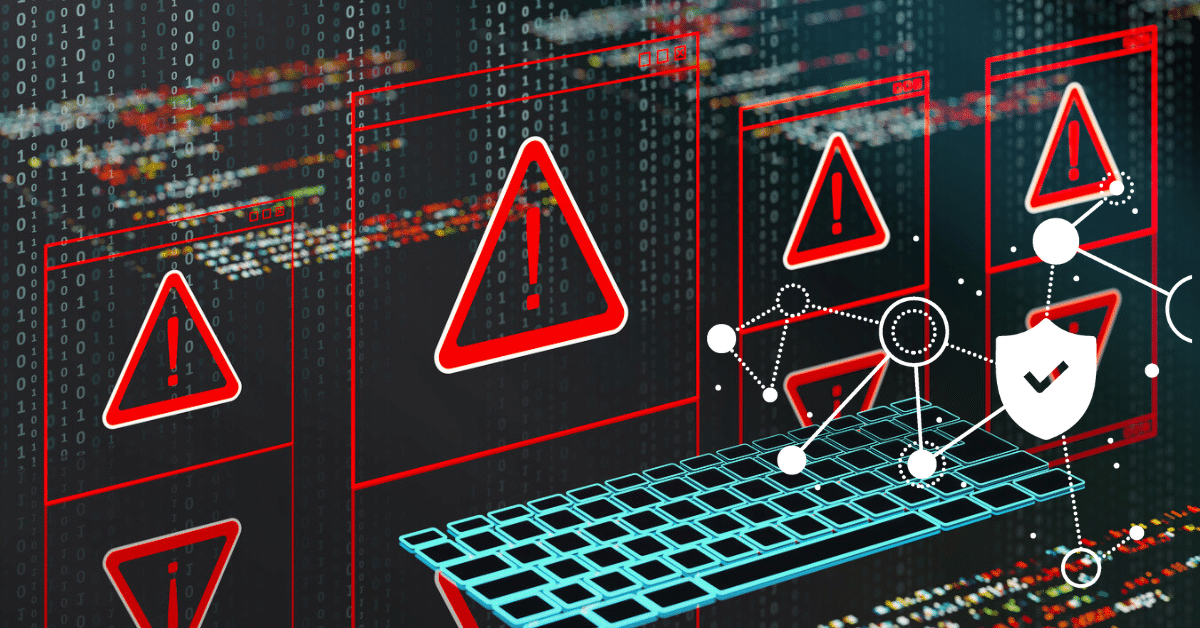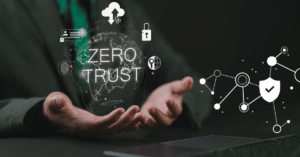Breaking the Vulnerability Backlog: Why Prioritization Without Complete Visibility Fails

In 2024, security researchers published over 40,000 common vulnerabilities and exposures (CVEs), marking a 38% year-over-year increase. Simultaneously, in the first quarter of 2025, attackers exploited nearly one-third of vulnerabilities within a day of CVE disclosure. The combination of more vulnerabilities and faster mean time to exploitation means that organizations need true visibility into the risk that each vulnerability poses so they can prioritize their remediation and patch management activities.
To mitigate risk, organizations implement various security tools. While these technologies provide information, the data often remains siloed. Like a fractured mirror fails to provide a true image, fragmented tools fail to provide visibility into the organization’s overall vulnerability risk profile.
Optimizing a remediation and patch management program requires building an accurate asset inventory while enriching vulnerability data with threat intelligence and context about the environment.
Why Do Organizations Lack Accurate Asset Inventories?
Organizations cannot secure or prioritize assets that they do not know they have. Most organizations rely on a collection of tools to build their asset inventories. A typical organization may incorporate any or all of the following:
- Vulnerability scanners: Probing networks to identify connected devices with known vulnerabilities.
- Endpoint Detection and Response (EDR): Installing agents on connected devices to detect suspicious activity.
- Network Access Control (NAC): Enforcing authentication and security policies when devices connect to networks.
- Configuration Management Database (CMDB): Distributing patches, enforcing security configurations, and tracking updates across managed devices.
Fragmented Tools Create Fragmented Data
While each tool provides important information, each focuses on a limited use case. Simultaneously, the different technologies may collect overlapping but inconsistent information. For example, vulnerability scanners may identify CVEs in traditional devices, but they can disrupt service for Internet of Things (IoT) and operational technology (OT) devices, leaving these technologies unidentified and unmanaged.
Dynamic Environments Lead to Outdated Inventories
Even when organizations feel they have collected an accurate inventory, they need to maintain it. Organizations struggle to keep pace with their changing network environment when they use traditional discovery methods like manual updates, periodic scans, or spreadsheet-based CMDBs.
Poor Data Quality Hides Risk
The tools often define or classify assets differently. Even when they identify the same device, they may not provide the same information about characteristics like operating system, function, or location. Without the ability to correlate this data, security teams are unable to determine whether they inventoried all assets or whether they classified the risk appropriately.
How Do Incomplete Asset Inventories Undermine Vulnerability Prioritization Strategies?
Prioritization tools require complete, accurate data to determine the highest risk vulnerabilities. Without full visibility into all devices and their vulnerabilities, vulnerability and patch management teams may fail to remediate a critical exposure.
Incomplete Coverage Across IT, IoT, and OT
Traditional vulnerability scanners focus on identifying operating system and software vulnerabilities associated with enterprise IT assets, like laptops or workstations. However, these scanners fail to identify vulnerabilities in firmware running on IoT and OT devices. If the prioritization engine lacks insight into IoT and OT vulnerabilities, organizations may fail to remediate these weaknesses, creating an opportunity for attackers to exploit them.
Inability to Correlate Data
Different data formats mean that prioritization engines may not be able to correlate data across the diverse tool set. For the prioritization engine to work, it needs to have parsed and normalized data. When organizations are unable to correlate data from their different security tools, the prioritization tool lacks context about the environment that can impact device and vulnerability criticality and risk.
Inability to Provide Real-Time Risk Insights
From remote endpoints connecting and disconnecting to IoT device proliferation, organizations need solutions that provide real-time, continuous monitoring. When prioritization engines rely on static scans, the risk analysis may fail to reflect the actual landscape. If prioritization decisions lag behind real-time threats, high-risk vulnerabilities may remain exposed and exploitable longer.
Complete, Accurate, And Validated Visibility For Effective Vulnerability Prioritization
To appropriately understand risk and prioritize vulnerability remediation, organizations need a unified approach that combines asset discovery, data normalization, and threat intelligence. With a single source of accurate device and vulnerability data, security, vulnerability, and patch management teams can work cohesively to mitigate risk.
Build a Single Source of Truth Through Data Normalization
To build the accurate inventory that a prioritization engine needs, organizations can look for solutions that parse and normalize device data. By extracting the important data fields and standardizing them, organizations can merge data from vulnerability scanners, EDRs, NACs, and other sources, then cross-validate the information for a complete, accurate inventory across all IT, IoT, and OT devices that includes:
- Manufacturer
- Device type
- IP addresses
- Applications on devices
- Operating systems and versions
- Software versions
Correlate Data to Focus on Vulnerability Impact
Once the organization has an accurate, comprehensive asset inventory, it can identify critical assets more precisely. By aggregating and correlating data from various tools, security teams gain insight into how much the asset and its continued availability matter to business objectives. By linking vulnerability data to asset criticality, security, vulnerability remediation, and patch management teams can focus on vulnerabilities whose exploitation could do the most damage to the organization.
Incorporate Environmental and Control Context into Prioritization
To appropriately prioritize vulnerabilities, organizations need to enrich the data with context about the device’s environment. An organization’s existing security controls can impact the vulnerability’s risk, including the likelihood of exploitation and potential damage if attackers exploit it. For example, network segmentation, NAC policies, and isolation zones can change a vulnerability’s risk profile within the context of the organization’s environment.
Design for Scale and Comprehensive Coverage
As an organization connects more devices to their networks, it needs a scalable vulnerability management strategy that responds to each device type’s unique needs. As the environment’s complexity increases, vulnerability tools should expand coverage as new devices come online so that the organization’s prioritization decisions remain complete and accurate.
Asimily: Complete Visibility for Accurate Prioritization
Asimily unifies data from across the organization’s environment. With our platform, organizations can create a single, trusted view of assets and vulnerabilities across IT, IoT, and OT devices. Asimily normalizes and correlates data to ensure that prioritization decisions reflect reality, accounting for device context and current security controls.
With Asimily, organizations can create an accurate inventory and then leverage the platform’s automated workflows to reduce risky, manual processes.
To see how Asimily can help your organization gain the complete visibility necessary for effective vulnerability prioritization, contact us today for a demo.
Secure Every IoT Device.
Automatically.
Cyber threats move fast — so should you. Asimily gives instant inventory and smart, prioritized risk mitigation insights for every IoT, OT, and IoMT device — so you can take action before threats strike.




